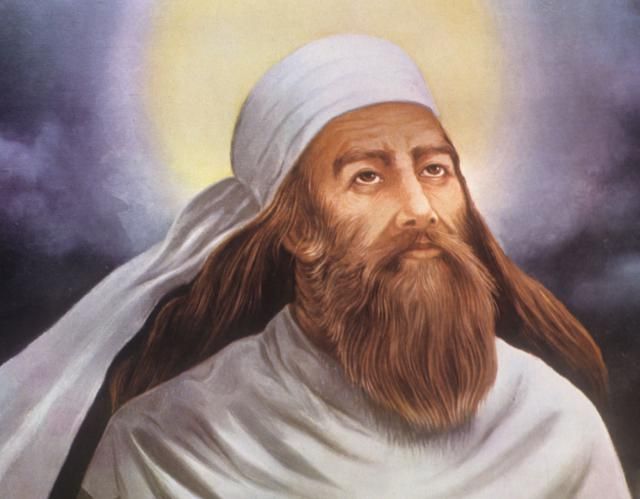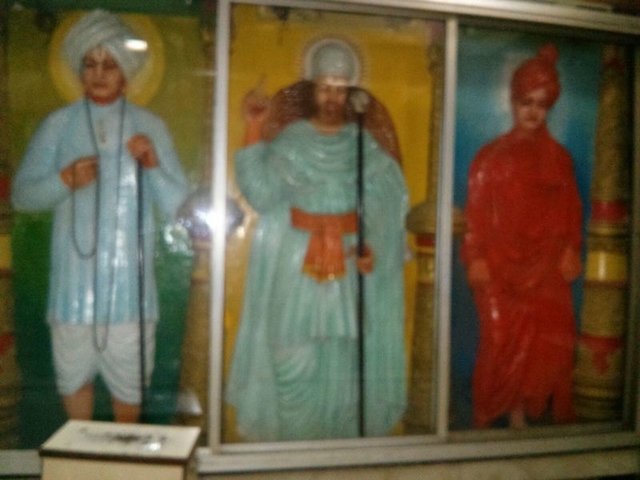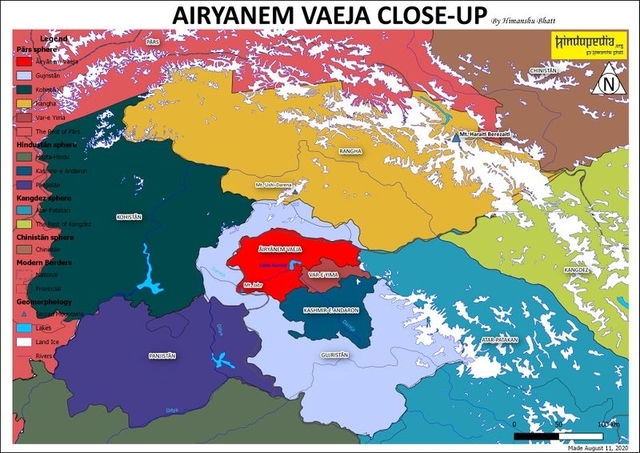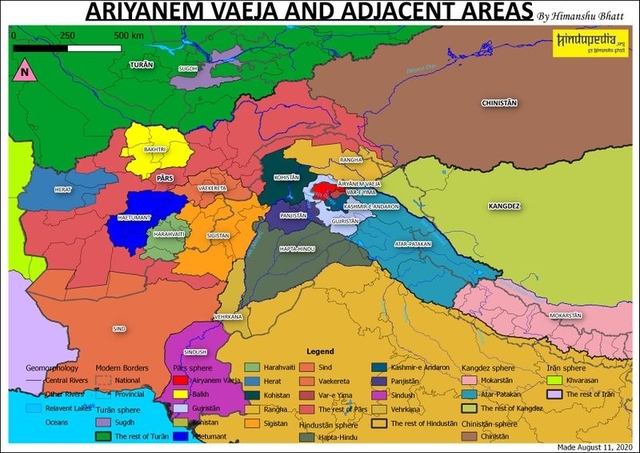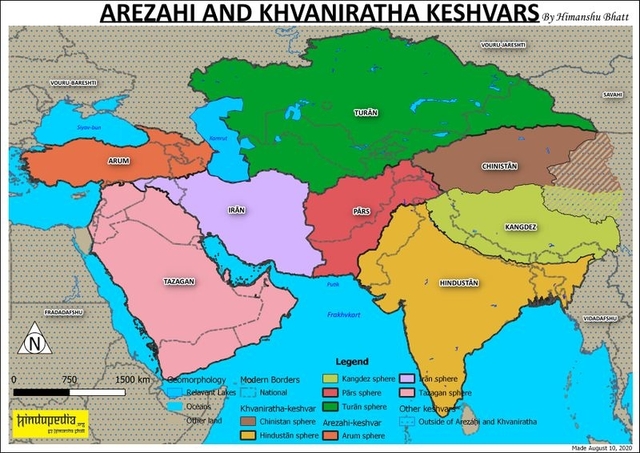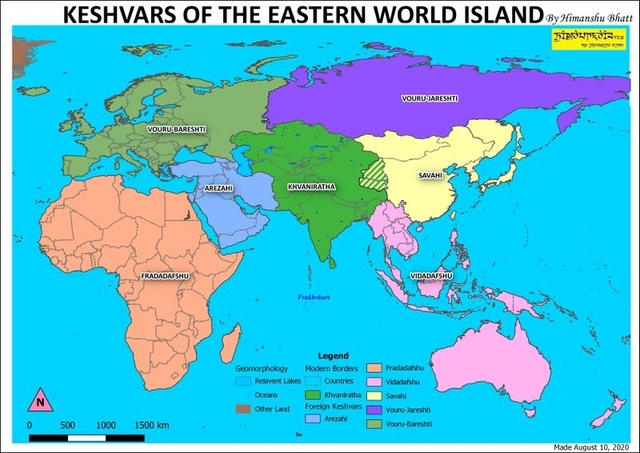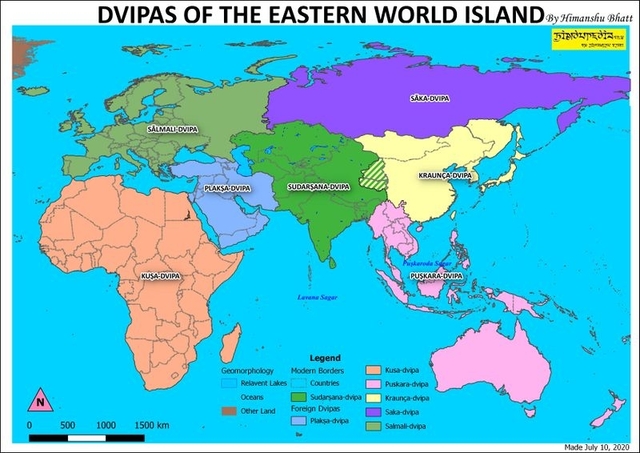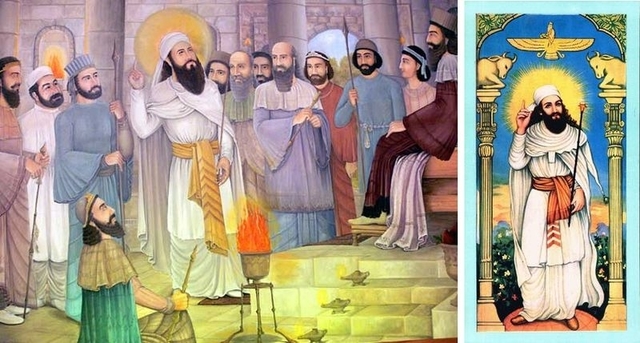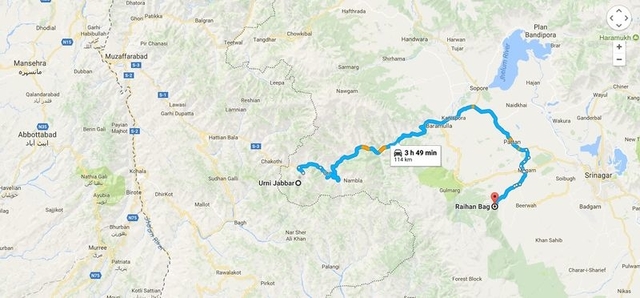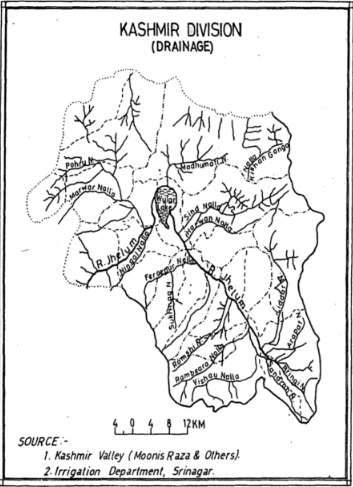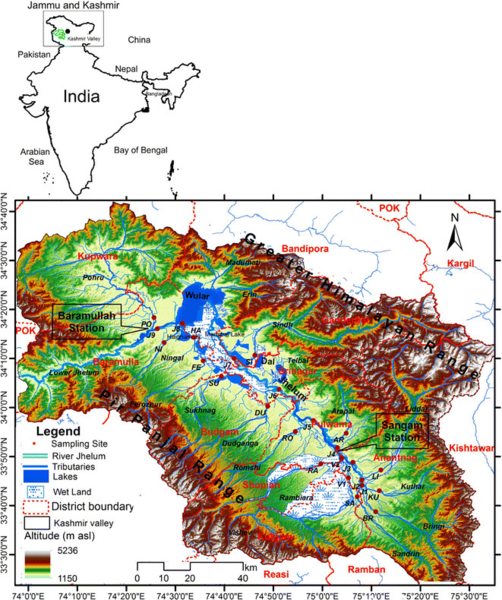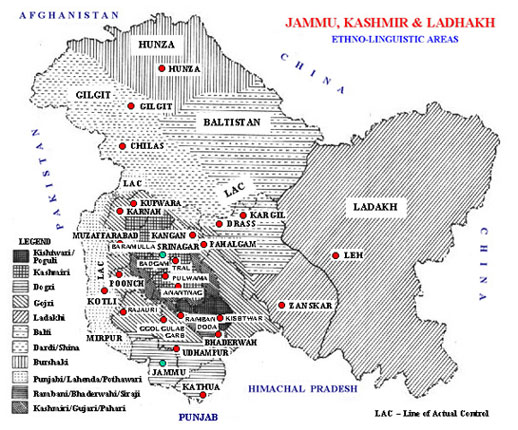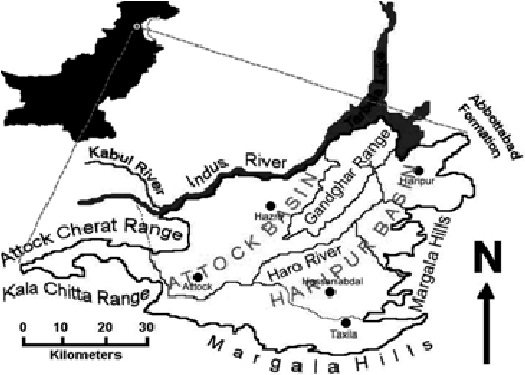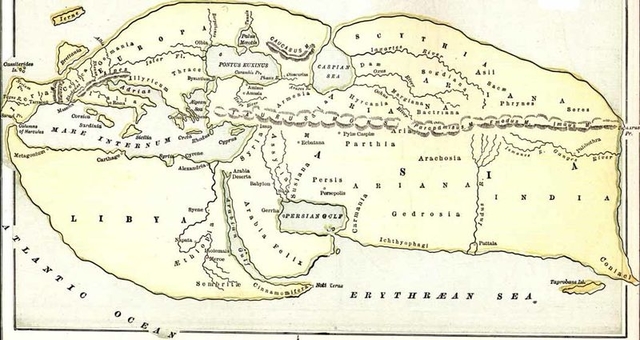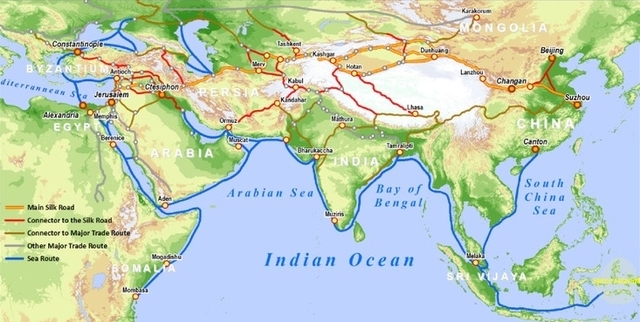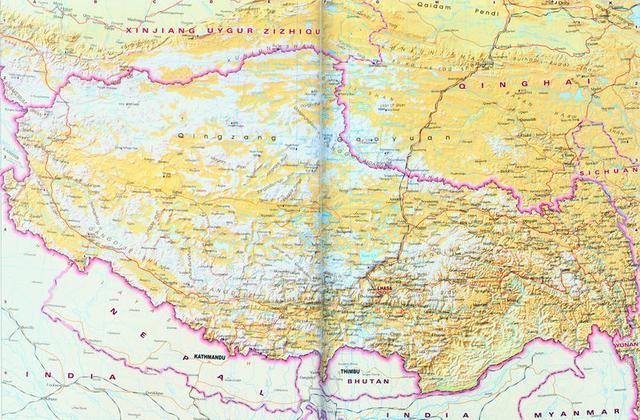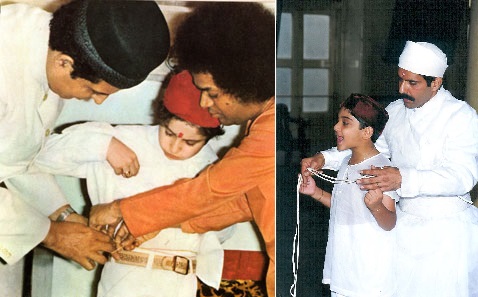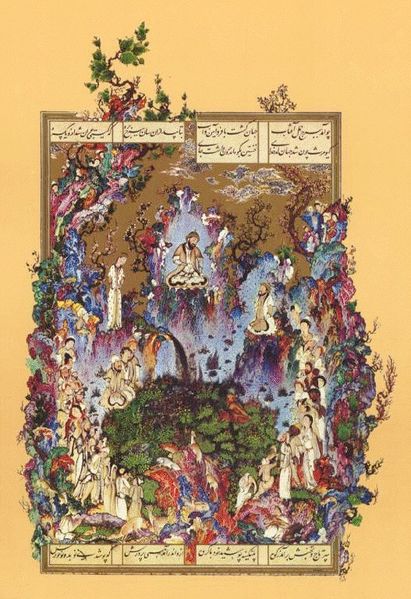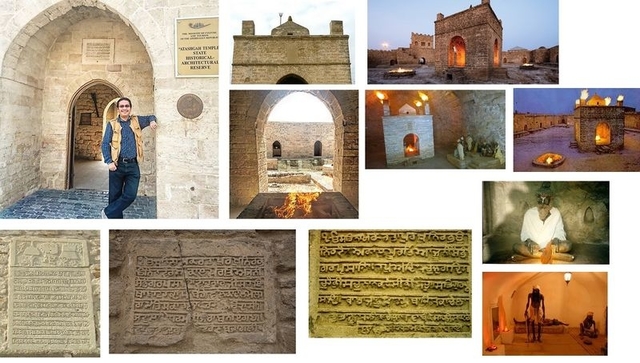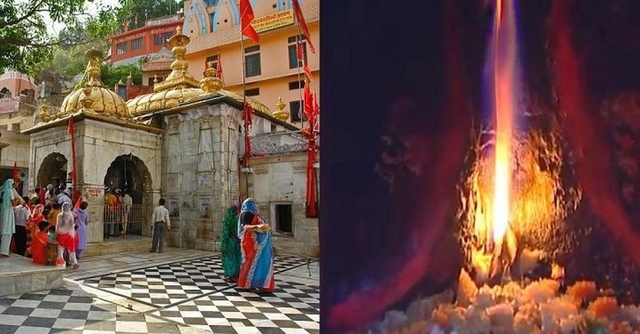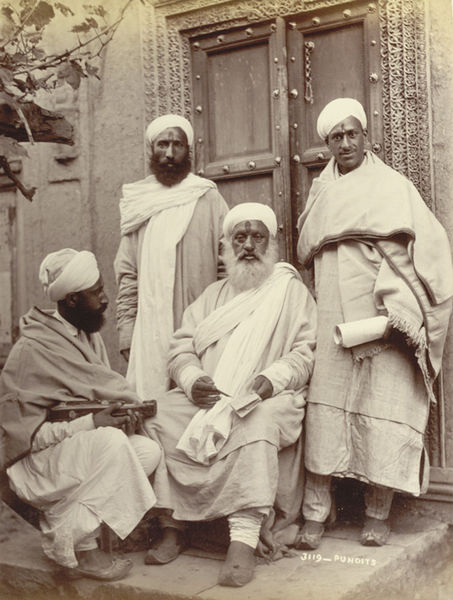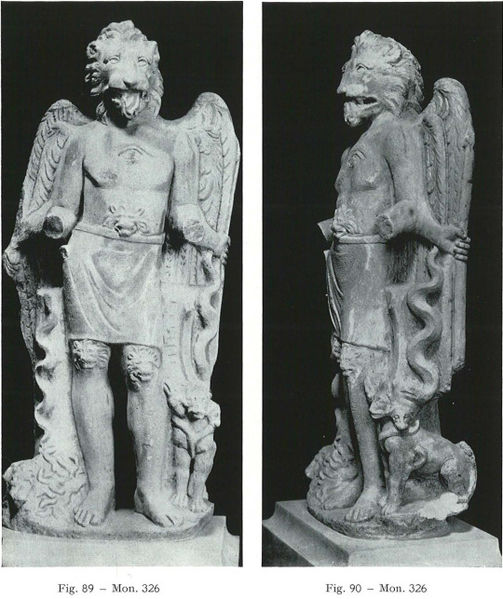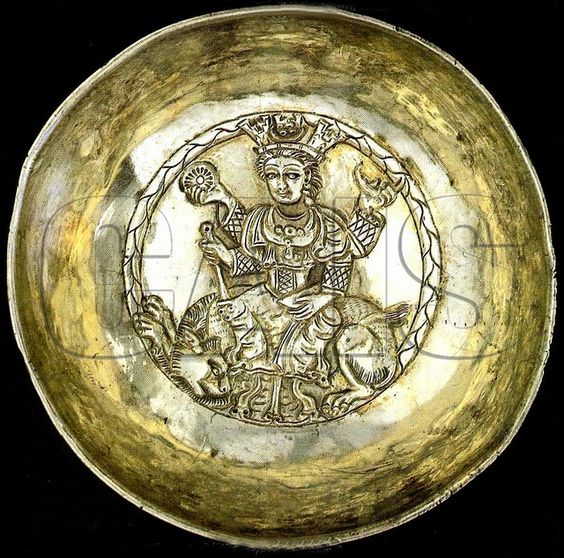
| ZARATHUSHTRA Inception of both the Religions :
Both Zoroastrianism and Vedic Aryans have similar origins, pay homage to the same spiritual seers, venerate the same gods and even have the same verses throughout the early scriptures. Mazdaen scholars Zubin Mehta and Gulshan Majeed had noted a similarity of Kashmiri customs with Zoroastrian ones. In the modern era, some Mazdaen clerics had visited Kashmir, who include Azar Kaiwan and his dozen disciples, and Mobad Zulfiqar Ardastani Sasani who compiled the Dabistan-e Mazahib.
Zarathustra was definitely a Kashmiri Brahman from India as he was an Atharvan, who called himself a zaotar, manthran and datta. He was referred to as an erishi and ratu. He also wore the sacred thread and dressed like a traditional Kashmiri Pandit, compiled Gathas containing Vedic verses, worshiped Varun (Ahura Mazda) and venerated other holy Vedic Asurs. He lived as an ascetic in a cave for some time and also had other traits similar to that of an Indian Brahman, not to mention other customs similar to those of Kashmiri Aryans. Linguistically, not only were some verses he wrote direct excerpts from the Veds but the closest languages to his own, Avestan, are Sanskrit and Kashmiri. Both, the Vedic geography of Yam's domain and the Mazdaen geography of Yim's domain correspond to an area in central Kashmir. The geographical description of Zarathustra's birthplace in the Mazdaen scriptures match Kashmir's Diti (Daitya) and Indus (Veh) rivers and Urni Jabbar (Jabr) Mountain within Baramulla district. In addition, the descriptions of neighboring regions adjacent to Airyanem Vaeja, such as Ataro-Patakan, Kohistan, Kangdez and Panjistan match those of places surrounding Kashmir. Apart from these places in Mazdaen scriptures being in conformity with places in and around Kashmir, the birthplace of Tonpa Shenrab is also adjacent to Zarathustra's. (That makes sense because the religions of the 2 saints are similar in their concepts dualism, cimeration, and customs such as wearing of white turbans for sages.) Ancient scholars, such as Clement of Alexandria and Ammianus Marcellinus, connecting Zarathustra to Brahmans can definitely be seen, and even in modern times Godfrey Higgins had called him "Zerdusht the Brahmin."
It is definitely not hard to imagine Brahmans in an Afghan king's court as there have been throughout history, and even during Zarathustra's time he converted at least 2 other Brahmans of the court, Changragach and Byas. Zarathustra also mentions having dealt with the Angiras, and Nodha.
Similarities
:
Although some western depictions falsely show him as European-looking with brown hair and eyes, and white skin, the Bahram Yasht declares Athravans are black-haired
Zarathustra's name :
Just as the pseudonyms Gautam Buddh, Vardhman Mahavir, and Guru Nanak are reflective of the sages' names and titles, so too is the case of Zarathustra Spitama. 'Zarathustra' is a name that relates his devotion to Ahura Mazda.
"There
are the master of the house, the lord of the borough, the lord
of the town, the lord of the province, and the Zarathustra (the
high-priest) as the fifth".
Zarathustra' as a class of 'ustras' is alluded to in the Atharv Ved.
"Three
are the names the ustra bears, Golden is one of them, he said.
Glory and power, these are two. He with black tufts of hair shall
strike".
The ustras referred to in this passage are definitely humans because elsewhere too Atharvans with black hair (i.e., implying theur youth) are praised. In Mazdaen scriptures too, Athravans with black hair are praised.
"O Zarathushtra! let not that spell be shown to any one, except by the father to his son, or by the brother to his brother from the same womb, or by the Athravan to his pupil in black hair, devoted to the good law, who, devoted to the good law, holy and brave, stills all the Drujes".
- Khorda Avesta 2.4.10
There was "the Armenian Zoroaster, grandson of Zostrianus" ("Zostriani nepos"), who was the Pamphylian friend of Cyrus the Great. There was also a "Zoroaster" of Babylon whom Pythagoras had written of meeting. Further, the Changragach-Nameh and the Zarathusht-Nameh were written by Zarathusht Behrairi Pazdu, while Zaratusht Bahram was an important Mobed. Thus, this explains that the 'Zoroaster' written about after 6th century BCE wasn't always necessarily Zarathustra Spitama, and we can also cancel obscure regions as his supposed birthplace.
Zarathustra's surname 'Spitama' comes from his ancestor Spiti. This name traces its roots to the Spiti Valley of Himachal Pradesh, just south to Kashmir. This is also supported by the fact that Zarathustra had taken solitude at age 15 to Mt. Ushidaran which the Greater Bundahishn identifies as Mt. Kaf. Today is a village in the Spiti Valley of Himachal Pradesh named Kaf.
'Spitama' itself has the Vedic Sanskrit attribute of containing 'tama', like the gotra patronyms of Gautama, Asvattama, Padmottama, Ratnottama, and Dirghtama(s), as well as the titles of hiranya-vasi-mat-tama, rathi-tama, ratna-dha-tama, and sasvat-tama.
Background
of Rishis :
Athravans
of India :
Bahram Yasht declares Athravans are black-haired.
Zarathustra was of the Athravan (Atharvan) priestly caste. The Avesta declares that Zarathustra was an Athravan.
Hail to us! for he is born, the Athravan Spitama Zarathustra. Zarathustra will offer us sacrifices with libations and bundles of baresma with libations and bundles of baresma and there will be the good Law of the worshipers of Mazda come and spread through all the seven Karshvares of the earth.
- Avesta 24.94
The Atharvans are associated with fire symbolizing it to be as sacred to them as it was to the later Athravans. Bharadvaj says to Agni that Atharvan has churned Agni out from the lotus, from the head of everything. Vitahavya also says that the Atharvans have brought Agni from the "dark-ones" (i.e., nights.)
Angras
are Angirasas :
The fact that Bhargavs are, like their subgroup Angirasas and the Athravans, also descendants of Vashishth is established in Purans. Hence, Kava Usan (Shukra Acharya the Bhargav) is venerated and included as one of the holiest sages in Mazdayasna because he was also from Vahista (Vashishth).
Sraosha of the Avesta is Brhasa (Brhaspati) of the Veds who was the son of Angiras, so Sraosha is also of the category of Angras mentioned in the Avesta.
Zarathustra
was of Vashishth Gotra :
The Atharvans are descended from Vashishth Rishi. Vashishth's dedication to Atharvan is demonstrated in the Rig Ved wherein after being filled with anger, he calms himself by reading the Atharv Mantra. Vedic scholar Mallinatha writes in his commentary of the Kiratarjunya that the Sastras declare that the mantras of Atharv Rishi are preserved by Vashishth. Just as there are several Vashishths within the community, the Avesta acknowledges that there are several Vahistas, and refers to them as the "Lords of Asha." Even in the Vahistoistri Gatha, Francois De Blois notices that it consists of verses with a variable number of unstressed syllables.
Avestan
as a dialect of Sanskrit :
It is known that both Vedic Sanskrit and the Zhand Avestan languages were very close. In fact, some scholars have even stated that "the Parsi was derived from the language of the Brahmans" like various Indian dialects. This view point was supported by "Zend language was at least a dialect of the Sanskrit." Max Muller, William Jones and Nathaniel Brassey Halhed put forward this viewpoint.
Erskine Perry also was in the view that Avestan was a dialect of Sanskrit and was exported to ancient Persia from India but was never spoken there and his reasoning for this is that of the seven languages of ancient Persia mentioned in the Farhang-i-Jehangiri, none of them is referring Avestan language. Another scholar perpetuating the viewpoint of Avestan being a Sanskritic/Prakritic dialect was John Leyden.
"Zend is a Brahmin language." - J.G. Cochrane
List of some Sanskrit and Avestan words :
List of some Sanskrit and Avestan names for gods :
Zarathustra portrayed on a pillar of the Shakt-Vaishnav Birla Mandir, Jaipur, Rajasthan. Aryanism's pluralistic tradition recognizes the pious sage as a saint in the list of the world's spiritual gurus
Zarathustra portrayed on a mural of the Shree Saibaba Satsang Mandal, Surat, Gujarat. He is shown next to Jalaram (left) and Vivekanand Apart from the gods that are common to both Zoroastrianism and Aryanism, names of some other Aryan gods are carried by even modern day Persian speakers. For example, the names 'Shiv' (Charming) and variations of 'Ram' (Black) are used by Iranic speakers, such as Persians and Pashtuns. King Ram is also added in names such as 'Shahram' (King Ram) and 'Vahram'/Bahram' (Virtuous Ram), which was the other name of Verethragna mentioned in the Bahram Yasht of the Avesta. The Sassanian kings took the Vahram title, such "Vahram I" (ab. AD 273-276.) Toponyms as well include 'Ram'/'Raman' in their syntax, such as Ramsar in Iran.
Daeva
does not mean Dev :
Whereas the root of the Avestan word 'daeva' is "dae" meaning god, of 'dev' it is "div", which means light. Zarathustra wrote in his Gathas, "daenae paouruyae dae ahura!". Hence, the word for religion in Avestan is daena.
That dev carries positive connotations is seen in Gatha 17.4 Yasna 53.4 wherein Ahura Mazda is said to be a "devaav ahuraaha."
As Airyanem Vaeja is in Kashmiri, the Avestan and Kashmiri vocabulary are similar. 'Dai' is still used by Kashmiris to refer as god.
Many
Avestan verses are from Veds :
Zoroastrianism and Aryanism With bending down, oblations, sacrifices, O Varun, we deprecate thine anger :
- Rig Ved 24.14
There are several passages in the Veds (especially the Atharv Ved) and Avesta that are identical, with the only difference that they are in the different dialects, Avestan and Vedic Sanskrit.
There are two sets of Mazdaen scriptures; the Zhand Avesta and the Khorda-Avesta. The Zhand contains 3 further sets of writings, known as the Gathas compiled by Zarathustra, and the Vendidad, and Vispered. (Not surprisingly, Vedic Aryan scriptures also have collections known as Gathas, such as the Vasant Gatha and Theragatha.) The Khorda contains short prayers known as Yashts. They are written in a metre much like the Veds. Normally they contain 15 syllables known in Sanskrit as Gayatri asuri) like hymns of the Rig Ved, or Ushnih asuri such as in the Gatha Vohu Khshathrem or of 11 syllables in the Pankti asuri form, such as in the Ustavaiti Gatha.
Some scholars also note that there is a connection between Bhargav Rishi and Zoroastrianism, as the Atharv Ved portion composed by him is known as Bhargav Upasth and the latter word is the Sanskrit version of the term 'Avesta'.
"The Avesta is nearer the Ved than the Ved to its own epic Sanskrit." - Dr. L. H. Mills
Some identical verses from Veds and the Avesta :
Why
Zarathustra's teachings are called Zhand Avesta :
Zoroastrianism and Vedic Aryans O Kshatriya, the verses that were
recited by Atharvan to a conclave of great sages, in days of old,
are known by the name of Chhandas. They are not be regarded as
acquainted with the Chhands who have only read through the Veds,
without having attained to the knowledge of him who is known through
the Veds. The Chhands, O best of men, become the means of obtaining
Brahm (Moksh) independently and without the necessity of anything
foreign.
The word 'Avesta' comes from Sanskrit 'Abhyast', which means Repeated. Hence, the Avesta (Abhyast) is basically a repetition of Zarathustra's teachings.
Zarathustra was born in Kashmir :
A close-up of Airyanem Vaeja and the neighbors in the time of Zarathustra
Airyanem Vaeja and its adjacent areas the neighbors in the time of Zarathustra
The continents of Arezahi and Khvaniratha. These are the ethnic realms that writers of the Bundahishn describe. They saw Airyanem Vaeja as essentially the cradle-land of their culture (i.e., Iranian languages) so included it within Pars
These are the continents that the Indians and Iranians saw dividing the eastern world island
Same continents with Sanskrit names
Zarathustra is usually shown wearing a dhoti, (Indian-fashioned garment), unlike the Balkhans to whom he preaches The birthplace of Zarathustra has been a subject of dispute ever since the Greek, Latin and later the Muslim writers came to know of him and his teachings. Cephalion, Eusebius, and Justin believed it was either in Balkh (Greek: Bactria) or the eastern Iranian Plateau, while Pliny and Origen thought Media or the western Iranian Plateau, and Muslim authors like Shahrastani and al-Tuabari believed it was western Iran. While Zarathustra's place of birth has been postulated in various places even in modern times, including within areas not historically included by authors, such as in Tajikistan and Uzbekistan, a few scholars have believed that he was born in Kashmir. Shrikant G. Talageri and T. Lloyd Stanley were proponents of this Kashmiri Airyanem Vaeja viewpoint. Mazdaen scriptures mention repeatedly that Zarathustra was born in Airyanem Vaeja, also known as Airyanam Dakhyunam. However, Zarathustra moved from there to Balkh, where he was given sanctuary by its king and he had become a royal sage. The Mazdaen scriptures further say that many other people of Airyanem Vaeja had moved out with the dramatic climate change whereby snow and cold weather became much more frequent. Zarathustra was regarded as a pious Godman for the Balkhan administrators of his time and India was recognized as a center of spiritual and scientific wisdom. This is why Mazdaean scriptures show that King Vishtasp's court was already familiar with the Indian Brahman adviser Changragach who was teacher to minister Jamasp, even before Zarathustra's arrival to Balkh. The Brahman Byas was also welcome in King Vishtasp's court and met and had become a disciple of Zarathustra. King Vishtasp (Greek: Hystaspes) was the father of King Darius I of the Balkh Kingdom and he had studied astronomy amongst the Brahmans of India.
There are similarities noticed by scholars such as Subhash Kak and Zubin Mehta which are described by them between Mazdaen practices of Kashmiri Aryans. These include the sacred thread for women (called aetapan in Kashmiri) and the sacred shirt (sadr.) The festival of Nuvruz in commemoration of King Yim is known as Navreh in Kashmir which is celebrated by Kashmiri Aryans. Furthermore, the folklore of Kashmir too has many tales where devs are antagonists to both devs and Asurs. As the title Zarathustra has many variations, such as 'Zartust' and 'Zardost', the Sanskrit equivalent of his title is 'Haritustra Svitma'. The 'p' in 'Spitama' corresponds to a 'v' in Sanskrit just as Avestan 'Pourusarpa' is 'Purusharva' is Sanskrit. Whereas the consonant 's' of many Sanskrit words becomes 'h' in Avestan, 'Svitama' maintains its letter because it is followed by a 'v', just as how the 's' in Sanskrit 'ashva' (horse) becomes 'aspa' (i.e., 'Dhruwaspa' means She who possesses strong horses, and animals within names were more common, such as Yuvanashva and Vindhyashva.) As 'Spitama' means white, the Sanskrit word for the color-based name is 'Svitama'. Svita is a metaphorical characteristic associated with purity and normally associated with Brahmans in the Veds. For example, the Rig Ved describes the Vashishth Rishis as 'svityam' (white), 'svityanco' (dressed in white) and white-robed. Zarathustra dresses in white as well Mazdaen priests also dress up in white. The connection between Vashishth Rishis with Atharvan Rishi is a very close one.
Identification
of Avestan sacred places in Kashmir.
Why
Airyanem Vaeja is also called Anu-Varshte :
In the Anava lineage, 7th in descent from Anu were brothers Usinar and Titikshu. The territories gained by the Anavas was split by these brothers wherein Usinar had grasped Kashmir and the Punjab while Titikshu gained rulership over eastern territories of Ang (Bihar), Vang (Bengal), Suhma, Pundra, and Kaling (Orissa.)
Because Kashmir has prehistorically been the Anava stronghold, even during the Dasarajna War as the Rig Ved mentions, it is acknowledged as such both in Aryan scriptures (i.e., Atharv Ved) and in the Mazdaen Avesta.
One of the reasons why historically Balkh and some other regions of modern Afghanistan were Indianized (and hence, referred to as Ariana) is because the Anavas also held areas of Afghanistan under their suzerainty. In Vrtlikar, Sage Panini (from Afghanistan himself) mentions that there are 2 Anava settlements of the Usinar called Ahvajal and Saudarshan. Even scholarly Chinese visitors to ancient India, Fa Hien and Yuan Chwang describe the story of a certain King Usinar told at Udyan (modern Swat Valley where people are mostly ethnically Afghans) that sacrificed his life to save that of a dove's.
To little surprise the Kurma Puran mentions Anava being 1 of the 7 sons (Saptrishis) of Vashishth, meaning that Vashishth had married within the royal family. Within the same Manavatar era another son of Vashishth was Shukra or Kavi Usan (Kava Usan of Mazdaen scriptures), meaning that Vashishth had likely married multiple women.
Jabr Mountain is Urni Jabbar Mountain :
Zarathustra's birthplace Urni Jabbar (Avesta's Jabr Mountain) and his city of residence Raihan Bag (Avesta's Rai) Zarathustra was said to have been born in the village of Raji by the Darej River near the Jabr Mountain. In Vendidad 1.16 where the city of Ragha is referred to the Pahlevi commentators add that it is in Ataro-Patakan. In Kashmir, there is a village of similar name, Renji in Sopore district. There are other villages and towns bearing 'Rai' in their names. These are Raipura, Raika Gura, Raika Labanah, Raika Mahuva, Rainawari, and Rai'than. Kashmir bears the villages Raj Pora Thandakasi Dareja is also mentioned to be where Zarathustra's father lived hence, Zarathustra lived there too. Today in Kashmir there are the 2 rivers Darga Burzil and Darga Rattu that merge to form the larger Astore River.
Amui
(Amar) is Amartnath in Kashmir :
This verse is saying that Zarathustra was of this place, meaning he likely spent a significant portion of his life there. This is also the opinion Carl Bezold and Louis Herbert Gray.
Amarnath pilgrimage is Anantanag district, bordering Baramulla district, where Zarathustra was born.
Rai
is Raihan Bag in Kashmir :
This village is very close to the Urni Jabbar mountain, it is in Khag tehsil in the Badgam district.
Daitya River is the Jhelum :
Arapath (Diti) rises in Hairbal Ki Galli and flows southward until it merges with Bring, which in turn merges with Lower Jhelum near Danter village Scriptures mention the original homeland of the religion and of Zarathustra, but due to placename changes, the exact location has been hard to pinpoint. Daityas are also mentioned (as are Danavs) in ancient Mazdaen texts as good beings. It is believed that the homeland of the Aryans is located by the Daitya River as said in this Avesta quote, "Airyanem Vaejo vanghuydo daityayo", which Darmesteter translates as "the Airyana Vaejo, by the good (vanghuhi) river Daitya." In later scriptures, the river is known as 'Veh Daiti' wherein the Veh refers to the Daiti being its tributary. Veh in the Bundahishn is mentioned as the Indus River. Bundahishn mentions that Veh is also called Mehra by Indians, and surely enough Mehra is a town along the Indus. Veyhind (Udabhandapur, modern Hund) is also a town reflecting Indus' Veh-name. Further, Vahik was the name of a kingdom around the Indus and its meaning is Land of the River. (Here was Arattdesh or Panchanad.) Kashmir has a river named Diti which is said to have been an incarnation of Diti, mother of the Daityas. The connection between the Diti River of Mazdaen scriptures and the patriarch Diti of Aryan scriptures has been observed by James Hewitt. Daityas have been mentioned in Aryan Epics as staunch Asurs. This river is also popularly called as Chandravati, Arapath or Harshapath. The Arapath Valley begins where the Arapath (Diti) stream stems out of Jhelum. Because the Diti becomes the Jhelum at their stem, the Mazdaen scriptures just call the entire Jhelum as Daitya River. They also refer to it as the Veh Daiti because the Jhelum itself merges into the Indus, which the Bundahishn calls 'Veh'. (The entire Jhelum is certainly known by many names in India.) Just as the Bundahishn calls the Daitya "the chief of all streams", scholars note the Jhelum has more streams than any other Indus tributary.
Zarathustra used to bathe in the Dareja affluent of the Daitya. In the same way, Aryans are encouraged to bathe in it among rivers of Kashmir.
After that on the 14th of the dark-half of the month, one should
take bath, before sun-rise, in the cool water of the Vitasta or
the Visoka or the Candravati or the Harsapatha or the Trikoti
or the Sindhu or the holy Kanakavahini or any other holy river
or the water-reservoirs and the lakes.
King Vishtasp used to perform sacrifices along the Dareja. In the same way, Aryans are encouraged to perform execute the Rajasuya ceremony along the Diti.
By bathing in Harshapath, one is honoured in the world of Sakra
and by bathing in Candravati one gets the merit of (giving) ten
cows.
- Nilamat Puran, verse 1349-1350
Dareja is an affluent of Daitya River :
The (Dareja) Lower Jhelum River coming out of Wulur Lake The Dareja is the lower Jhelum from which stretches from Hairbal Ki Galli to Muzaffarabad to join the other part of the Jhelum that stretches Mangla Reservoir to Muzaffarabad. Today this stream is known as the Lower Jhelum.
For the occurrence of the seventh questioning, which is Amurdad's,
the spirits of plants have come out with Zaratust to a conference
on the river Dareja's high ground on the bank of the waters of
the Daiti.
Of those eighteen principal rivers, distinct from the Arag river
(Amu Darya) and Vêh river (Indus), and the other rivers
which flow out from them, I will mention the more famous: the
Arag river, the Vêh river, the Diglat river (Yarkhun) they
call also again the Vêh river, the Frât river, the
Dâîtîk river (Jhelum), the Dargâm river,
the Zôndak river, the Harôî river (Harirud),
the Marv river, the Hêtûmand river (Helmand), the
Akhôshir river, the Nâvadâ river, the Zîsmand
river, the Khvegand river, the Balkh river (Balkhab), the Mehrvâ
river they call the Hendvâ river (Indus), the Spêd
river, the Rad river which they call also the Koir, the Khvaraê
river which they call also the Mesrgân, the Harhaz river,
the Teremet river, the Khvanaîdis river, the Dâraga
(Jhelum's stream Lower Jhelum) river, the Kâsîk river,
the Sêd ('shining') river Pêdâ-meyan or Katru-meyan
river of Mokarstân.
Bundahishn's Kohistan is Kohistan of Karakoram Range :
Gurjistan is 1 of the ethnic regions of Kashmir, and is mentioned in Mazdaen scriptures as possessing the Daitya River. Here, Gurji is the predominant language
The Daitik river (Datya) rises in Airan-vej and flows through
Kohistan.
Kohistan is also referred in the Pazhand transcription of the Bundahishn as Gurjistan. The Gurjistan that is referred to is the Gurez Valley in Kashmir. Gurez is acknowledged by V. R. Raghavan as to have come from 'Gurj' and 'Gurjur'.
Gopat, also known as Gopistan is another name for Kohistan.
The land of Gopat has a common border with Eran Vez on the banks
of the river Datya.
Subdastan is also a toponym of Kohistan.
The river Datya comes from Eran Vez and goes to Subdastan.
Bundahishn's Panjistan is Panjistan of Punjab :
Haro River has 2 streams. Zend is its northern branch Panjistan is mentioned as possessing the Zend River. The name in present-day is used to refer to a region of northeastern Punjab region. Even the language spoken there is called Panjistani.
The Pahlavi word 'Zend' (referring to a city, not the Zhand Avesta) is the translation of local 'Jand' within the Punjab. There are cities and towns throughout the region named Jand. Hence, the river is called Jand (Zend.)
Zoroastrianism and Aryanism The Zend River passes through the
mountains of Panjistan, and flows away to the Haro River.
Hara
Mountains are Himalayas and the river Aravand is Sarasvati :
Hara's most sacred peaks are known as Us-Hindava (Pahlevi: Usindam) and the Hukairya (Pahlevi: Hugar.) In the Avesta, Us-Hindava Mountain (which means Upper Indian Mountain) is also spoken of as Usindam and Usinda Mountain and it receives water from a "golden channel" from Mt. Hukairya (Of good deeds).
Hari is the name for a series of mountains as well as villages that have "Hara" as their names. Today Hara Parvat is revered by Aryans as a sacred mountain.
Further, the Ardvi Sura River that the Avesta writes about, is the Sarasvati River of the Rig Ved is said to flow from Hara into the Vourukasha Sea (Indian Ocean.) Sarasvati flowed from Hardikun Glacier (West Harhwal Bandarpanch Masif) and took its coarse into the Indian Ocean. To further, that Avestan Ar was in Kashmir is that it mentions god Sraoesa (Avestan name of Brhaspati) living in the Hukairya mountains. There is a prasasti dedicated to Sarasvati inscribed in Madhya Pradesh, which states that Sarasvati lived in heaven together with Brhaspati.
Also, the Avesta speaks of the Aravand River, which is another name for Ardvi Sura, and it is the Avestan translated name of Amaravati River, Sarasvati's other name.
Mount
Kaf is Mount Meru :
Al-Biruni mentioned that this is the same mountain that Indians call Lokalok.
The modern K2 mountain is Mt. Meru. It is in the boundary between the Karakoram and the Himalayas. The Karakoram (Black Mountains) are also known as Krishnagiri (Black Mountains) in Sanskrit. As a lot of places around Kashmir and Balawaristan contain 'giri' or 'gir' within their names.
Scholars like Charles Hamilton Smith and Samuel Kneeland had identified that the Kaf mountain or mountains are just north of the Indus River. The K2 is just north of Indus River.
Mount
Cinvat is Mount Crngvat :
The meaning of the Sanskrit word 'Crngvat' is summit peak, and 'Crngi' is used in general for the placenames of peaks of the Himalayas and of Sringaverpur (modern Allahabad), Srisring, Chirtasring, and Hiranyasring.
Outer
versus Inner Kashmir :
Included in the latter are other regions, such as Kangdez, the
country of Saokavastan, the desert of the Arabs, the desert of
Peshanse, the river of Navtagh, Eran-vej, the var made by Yim
and Inner Kashmir.
This passage distinguishes Airyanem Vaeja (Eran-vej) from Yima's var and Inner Kashmir. That then leaves the question: If this Bundahishn verse covers all lands from the Arabian Peninsula to Inner Kashmir, then where is 'Outer Kashmir'? Historically the Kashmir Valley had been divided into 3 regions; Kamraj (ruled by Kamran), Yamraj (ruled by Yama or Yima), and Maraj (ruled by Maran.) Because the passage mentions Eran-vej, the Yama's var, and Inner Kashmir in that consecutive order it aligns with the sequence of Outer Kashmir or Kamraj, Central Kashmir or Yima's vat, and Maraj or Inner Kashmir. Further, Kamraj includes Baramulla district which contains the Veh, Daitya, and Dareja rivers as well as Mt. Jabr. Hence, the Bundahishn's author of the excerpt purposely mentioned these regions in that order.
Kashmir lies on a plateau surrounded by high inaccessible mountains. The south and east of the country belong to the Aryans (Indians), the west to various kings, the Bolar-Shah and the Shugnan-Shah, and the more remote parts up to the frontiers of Badakhshan to the Wakhan-Shah. The north and a part of the east belong to the Turks of the Khota and Tibet. - Al-Biruni.
More
identifiers of Kashmir :
Rajesh Kochhar's statement that Zarathustra would have had to have been born in India for it to have been the Indo-European homeland holds true, because the Avesta indeed mentions toponyms of features in northern India, mainly from Kashmir. The reason why most places in the Avesta are of Afghanistan is because Zarathustra, who was not from the Balkh Kingdom and had migrated there as most scholars agree, had only composed the Gathas of the Avesta, whereas the rest of it was composed by his converts in Balkh. It is believed that the time gap between the Gathas and the rest of the Avesta are centuries. Scholars believe that this can be seen from "the poor grammatical condition of the language" of the Vendidad portion of the Avesta. Kochhar also says Mazdaens who migrated would have to carry the memories of India with them, because the first Mazdaens were Zarathustra's family including his cousin Maidhyomaongha, also known as Maidhyoimah or Medhyomah, brother-in-laws Frashaoshtra and Jamaspa, wife Hvovi, his daughters named Freni, Thriti and Pourushista, and his three sons which migrated with him, Zarathustra was the only compiler of the Avesta out of them. Apart from Zarathustra and his family, the first community of adherents was founded by King Vishtasp. Interestingly enough, the king converts after recognizing Zarathustra's holyness, when the prophet healed his paralyzed horse just like the Sant Kabir and Sant Namdev brought back a cow to life to earn the faith of kings. So because Kochhar asserts that India must be the Indo-European homeland by meeting his criteria, then India is Airyanem Vaeja.
India in general is overlooked by modern scholars who study the Mazdaen scriptures. Of importance is Mithra, who is associated with the Indian Subcontinent. His dominion is geographically described in the Mihir-Yasht as extending from eastern India and the Hapta Hindava to western India and from the Steppes of the north to the Indian Ocean. The Avesta mentions Four Waters, which are four rivers of paradise. Kashmiri poets have written of "four rivers of paradise" in their works. The Four Waters of paradise according to the Avesta are :
1.
The Azi
The water of these has a trait that they contain honey or honey-sweet water: "Two crossing canals that joined in a pond and which symbolized the four rivers of Paradise where milk, honey, wine and water flow." This same bed of four rivers is the one referred to in the Rig Ved. The Ved mentions waters filled with honey-sweet water as the greatest work of nature: "The noblest, the most wonderful work of this magnificent one (Indra) is that of having filled the bed of the four rivers with water as sweet as honey." The river of Kashmir which has four streams is the Jhelum and its four branches are Arapath (the Diti River), Vishau, Rimiyara and Lidar. As Airyanem Vaeja is said to have been the birthplace of the first set of humans, the Kashmiris too state the human origin story about Kashmir.
"Aryana Vaeja has been placed in Media by inhabitants of Persia and Media. But this is only a transfer...which has nothing primitive and has only originated in consequence of the real site being forgotten."
Zoroastrianism's scholars have written about the origins of the Mazdaens from India. Max Muller had said that, "The Zoroastrians were a colony from northern India." M. Michel Break wrote, "The Zoroastrians were a colony from Northern India."
Also identified in the Mazdaen scriptures are people such as Yim (Yam) and Manushchihr (Manu), who have traditionally been strongly associated with Kashmir. Manushchihr in the Avestan Yasht is mentioned as "the holy Manushchihr, the son of Airyu."
Zardasht is said to have planted, under auspicious circumstances,
two cypress-tress, one in Kashmir and the other in Farumad-tus,
and the Majusi (Magi) believe that he brought the cypress from
paradise when he planted it in those places.
Both the Farhang-i-Jehangiri and the Shahnameh mention that Zarathustra had planted a cypress tree at a place named Kashmar. This place in the prior text is named also as Kashmir. The composers of the Rehbar-i-Din-i-Zarthoshti (Dastur Erachjee Sorabjee Meherji Rana) and Dabistan (Mohsan Fani), believed this to be the Kashmir in India. Though the Kashmar/Kashmir in the story is actually a town in Khorasan, one can see that the etymological derivation of 'Kashmar' is from the more ancient region of Indian Kashmir. It's quite possible that the seeds to grow the tree came from Kashmir. Certainly, cypress tress exist in Kashmir, and the local species is known as Cupressus cashmeriana.
Zarathustra
learning from and preaching to other Vedic scholars :
According to the Canda's Persian text, the Changragach Nameh, an Indian Brahman was called to King Gushtasp's palace to discuss with Zarathustra the Mazdaen religion. The Brahman after his discussion had became a preacher of the religion and went back to India where he established followers and temples. Changragacha's name bares similarity to a placename, 'Chandrabhaga'. Another known Brahman that was a disciple of Zarathustra was a sage from India named Byas (in the lineage of Vyas), and likely Naidyaongh Gautam (a sage in the lineage of Nodhas Gautam.) According to the Bhavisya Puran, the Magi had first settled on the Chandrabhaga. This account also coincides with Timur's finding "fire-worshipers" in Punjab. Further, Aristoboulos, when visiting Taxila, had stated that the dead were "thrown out to be devoured by vultures." This practice is still observed in parts of western Tibet. Even Buddhist scriptures mention the great charnal fields near Simhapura in Kashmir wherein corpses were fed to wild animals for disposal. Further, within Taxila had existed a great Jandial fire temple mentioned by Philostratus. In the 1079 CE century, Sultan Ibrahim the Ghaznavid had attacked a community of Mazdaens at Dehra (probably Dehra Dun.) Then from Timur's invasion of India, among his captives of both Mazdaens and Aryans from Tughlikpur, some were Mazdaens who offered fierce resistance. In 1504 CE, Bedauni mentioned that Sultan Sikander destroyed fire-altars.
Relationship
between the Magi and Indian Aryan Priests :
Where
nations speak Avestan-like languages today :
Why Zarathustra left for Balkh :
Map from Aelianus' De natura animalium "That this Magian language was Zend is surely no forced hypothesis, since from those Brahmins seated in Bactria, we long after find Zoroaster bringing the same religious system and employing their Zend terms for it: a fact which no one can deny." - John George Cochrane
Map of the ancient Silk Route, which connected major cities and peoples of the ancient world In ancient time, Indian Brahmans had a great amount of influence over the kingdoms adjacent to India or ones that extended from India to other places like Gandhar, Kakeya, and Kamboj. The fact that Athravans are the chief priests of Mazdaean in Afghanistan implies that Brahmans were already established in the region before Zarathustra's arrival there. In the Vedic Era, King Atyarati Janamtapi conquered Uttara-Kuru, thus bringing more Indian influence to Central Asia and it shows the level of influence that India had. In the 3rd century BCE it was Asoka who had it under his dominion, and in the 8th century CE, it was Kashmiri king Lalitaditya Muktapida that had suzerainty over it. Balkh was known to have a Brahmans within the court of its king as well. Historically in India, Brahmans and other spiritual teachers have sought royal patronage to institutionally aid their religions such as in preaching beliefs to society and building temples. They would become rajyagurus (royal teachers) or rajpurohits (royal sacerdotal priests.) Zarathustra had become the chief spiritual adviser of the Balkhan court and his family members who were the first Mazdaens and also had similar positions within the court. Ancient Greek historian Aelianus in De natura animalium, also mention that there were "Indian Arianians" and there is some suggestion that control of Ariana fluctuated between Indian and Arian Arianians. This infers that Indians in Ariana had political influences.
"A Rishi went to another country, to try and get his name famous there as a Rishi, but he got less celebrated than before (in his own country.) O Rishi, you left your home without a cause." - A Kashmiri Proverb
Kashmir being Land of Rishis was abundant in rishis and it was normal for a monarch of ancient Balkh and other regions of Afghanistan to have Brahman teachers or ministers from India. For example, Nagsen (another Kashmiri) had become the preceptor of the Balkhan King Menander, while Ashvaghosh and Nagarjun (another Kashmiri) of Balkhan King Kanishk who after his conversion held the Fourth Buddhist Council in Kashmir. Buddhayasas was a Kashmiri and had become the preceptor of Dharmagupt the king of Kashgar in 5th century CE. Gunvarman was a prince of Kashmir but was missionary for much of his life and became the royal adviser to the kings of East China, Java, and Sri Lanka in the 4th century CE. Shakyashri Badhra, Ratnaver, and Sham Bhatt were Buddhist missionaries to Tibet and East China. Bilhan was a royal sage of Panchal's King Madanbhiram in the 9th century CE. Even the Aryan Shahi Dynasty was established in the 9th century CE by the Turki Shahi Dynasty's Brahman minister Kallar. King Minar Dhitika was converted to Buddhism by Sangbhadra. King Seve Salbar of Afghanistan was converted to Bonpo by Namse Chyitol.g. Kashmir was influential to both Indian and adjacent regions. In ancient history, Kashmir has been part of various kingdoms that had included regions of Afghanistan. Even in the Buddha's time, Gandhar was a Mahajanpad and in many periods of history, Kashmir was a part of the Gandharn Kingdom.
The presence of Indian Brahmans in various places, including neighboring ones, such as Gandhar and Balkh, was recorded in ancient times; Edict 13 of the 14 'Rock Edicts of King Ashok' reads, "There is no country, except among the Greeks, where these two groups, Brahmans and ascetics are not found and there is no country where people are not devoted to one or another religion..." Along the ancient Silk Route the Kashmiri gateway is at Kunjerab Pass and the Balkhan gateways on the pathway are Balkh and Shahrisabz.
Areas of Afghanistan being under the influence of Indian dynasties made Balkh a friendly place for Zarathustra to be a Brahman priest in.
Identification
of other places in India :
Ataro-Patakan is in Dardistan and Swat. It is known for having the Asnavand Mountain and the city of Rak from where Zarathustra's mother was from. In modern Gilgitstan exists the Rakaposh Range where bears the title Rak. The Avestan Vendidad, it is Rak, whereas in Pahlevi scriptures it's Rag or Arak.
Arrian, Strabo, Pliny and Justin had stated that Atropatene in Media was named after its Satrap Atropatos declared independence after Alexander's death. He ruled the region under Alexander of Macedon from 328-327 BCE.
Because the Avesta predates Satrap Atropatos, the region of Atropatene is not the Avestan Ataro-Patakan (Protector of the Fire.) The Avestan Ataro-Patakan is in Persian known by 'Adar-bigan'. Hence, when the kingdom of lower Media took on the name Atropatene, it's Persian-equivalent name also began being used, and in the predominant Turkic language there it became known as Azerbaijan.
That Ataro-Patakan borders Airyanem Vaeja is seen in multiple sources, including the Bundahishn.
Zarathustra's father was of the region Adarbaijan; his mother
whose name was Dughdo came from the city of Rai.
Aredvisur
(Sataves) River is Sutlej :
Sataves' fluvial properties are also elaborated when Bundahishn and Vendidad Fargard state that Sataves controls the tides of Vouru-Kasha.
Just as how the Daiti being a tributary of the Indus is called Veh-Daiti, so too is the Aredvisur called the Veh-Aredvisur as the Sutlej is also an Indus tributary.
Gaokern
is Gokarn :
There are said to be 2 Gokarn places; A northern and a southern.
The Varah Puran refers to Gokarn, as a region where the shrine of Lord Gokarn was installed at the confluence of the Sarasvati and the Yamuna.
Kangdez is Gangdise (beside Kashmir) :
Detailed map of Tibet showing the mountainous Gangdise region and Mt. Lionbo Kangri A.K.A. Kangdez From the geography of Mazdaen scriptures it is easy to determine the location of Airyanem Vaeja in Kashmir because the regions around Airyanem Vaeja are mentioned too. The part of Tibetan Plateau west of the Indus River and Brahmaputra is even today called Gangdise. Mazdaen scriptures and the Shahnameh mention Kangdez.
In the Dadestan-i-Menog-i-Khrad, the location of Kangdez is described as "Kangdez is entrusted with the eastern quarter, near to Satavayes on the frontier of Airan-vego." Since Kangdez is the Gangdise region, this excerpt also supports Kashmir being Airyanem Vaeja.
Turkish historian Al-Biruni writes that he cannot locate Kangdez and that both Yamakoti and Tara are cities there. Yamakoti is also mentioned in the Srimad Bhagavatam.
It is said that Bhadrasva-varsa extends from the city of Yamakoti
up to the Malyavat Mountain.
The prominent mountain associated with this continent is Malyavat Mountain. It is the modern-day Muztag (7,282m) because the Mahabharat identifies Meru as being between the Malyavat and Gandhamadan.
Apart from the Mt. Meru (Mazdaen Hara), Mt. Kailash is also revered in Mazdayasna as "Kangri". It is the abode of Peshotan (Chitro-maino), son of King Vishtasp, and Khwarsheed-chihr (Khursheed-chehr), son of Zarathushtra, who will gather their righteous army there before the final battle against Ahriman and his creatures, according to the Bundahishn, Denkard, Zand-i-Wahman Yasn.
Kangdez means "Fortress of Kang." In Ferdowsi's epic Shahnameh, Kangdez is named as Gangdez.
Kangdez's name is related to Kangha mentioned in the Avestan Yasht 5.54, the Aban (Ardvisur) Yasht. Antar Kanga is part of a list of mountains in Yasht 19.4. Antar Kang is the chief mountain on which Kangdez bases its name, and is the largest mountain in the Gangdise, Mt. Kailash.
Kangdez
is Rasatal :
To her did Yoista, one of the Fryanas, offer up a sacrifice with
a hundred horses, a thousand oxen, ten thousand lambs on the Pedvaepa
of the Rangha.
Pedvaepa river, an affluent of the Ranha is the Pedak-miyan of the Bundahishn.
The Pedak-miyan, which is the river Katru-miyan, is that which
is in Kangdez.
Ranha
is Rasa :
Two Avestan Fragards mention that Ranha is the largest river that they know. This is true because Ranha (Brahmaputa) is 3,848km while Veh (Indus) is 3,610km.
Three affluents of the Ranha are named in the Yashts; Aodhas, Sanak, and Gaudh. The Brahmaputra passes through Gaud (Bengal) region and hence, a Ranha tributary would be named Gaudha. This is likely the Jamuna River.
We sacrifice unto Mithra, the lord of wide pastures, ....sleepless,
and ever awake;
- Khorda Avesta 27.104
Frazdanav
is Lake Rakshash Tal :
This area was sacred for ceremonies not just for King Vishtasp, but also Indians since it is in the Indian Subcontinent and because rishis lived here.
Vaisampayana said,--"Then Maya Danav addressed Arjun, that
foremost of successful warriors, saying,--'I now go with thy leave,
but shall come back soon. On the north of the Kailash peak near
the mountains of Mainak, while the Danavs were engaged in a sacrifice
on the banks of Vindu lake, I gathered a huge quantity of delightful
and variegated vand (a kind of rough materials) composed of jewels
and gems.
Avestan
Mainakha is Vedic Mainak :
Vouru-Kash
is Indian Ocean :
Just as the Indian Ocean in Aryan scriptures is referred to as the "Sea of Salt" so to the Khorda Avesta calls the Vourukash, the "deep sea of salt waters."
Practice of similar customs :
Sathya Sai Baba with a Mazdaen priest during a child's Navjot ceremony (left), and a Mazdaen priest with a child performing the Navjot ceremony (right) There are customs that are typically unique to the Mazdaens, but were practiced in India. Some of the customs within the Mazdaen community are similar to those of the Aryan Brahmans. For example, the Navjot and vegetarianism.
Spiritual
initiation :
Navjot which means new birth is the initiation of a Mazdaen and they are given a sacred thread to wear similar to that of the Yajnopavit ceremony for many Aryans.
Just as the Mazdaen ceremony marks a 'new birth', the Aryan one also does the same. Hence, anyone who receive the Aryan ceremony is called a 'dwija' (twice-born.)
Vegetarianism :
A medieval painting of Gayomard and living beings, displaying that humans and animals lived in harmony
I allow the good spirits who reside on this earth in the good
animals to go and roam about free according to their pleasure.
I praise, besides, all that is offered with prayer to promote
the growth of life.
A large section of Parsis are vegetarian and during weddings/navjyots, there is always a "Parsi vegetarian" menu. There are four days in a month where all Mazdaens, even the non-vegetarians are expected not to eat meat in a practice called parhezi which means abstinence. They are Bahman, Mohar, Ghosh, and Ram roj. Meat is also not eaten for three days after a relative passes away.
Be plant-eaters ('urwar khwarishn', i.e., vegetarian), O you people,
so that you may live long. And stay away from the body of useful
animals. As well, deeply reckon that Ohrmazd the Lord, has for
the sake of benefiting useful animals created many plants.
Third century CE Greek biographer, noted in the prologue to his Biography that the Magi priests of Persia "dress in white, make their bed on the ground and have vegetables, cheese and coarse bread..."
The modern Ilm-i Khshnum movement in India advocated vegetarianism too.
Dr. Kenneth S. Guthrie believed that Zarathustra promoted vegetarianism.
Usage
of plants in worship :
Venerating
the same persons :
Varun
:
In the Rig Ved, though Varun remains a god, his influence lessened as many gods took the side of Indra as their king and many humans took him as their chief god.
Many a year I have lived with them; I shall now accept Indra and
abjure the Father Varun, along with his fire and his soma (haoma)
has retreated. The old regime has changed. I shall accept the
new order.
The Vendidad is called in Pahlevi the Zhand-I Jvit Dev Dat. Here the 'Dev Dat' portion of the title refers to the conch of Ahura Mazda. The Dev Dat is mentioned in Aryan scriptures as the conch of Varun.
There is a strong connection in Aryan scriptures between Varun and Asurs. For example, the Mahabharat mentions that he receives homage in his palace by Asurs. He is also said to live in the sea (any body of water other than a river) with Nagas, and his residence there is known as Asurnam Bandhanam. Then according to the Valmiki Ramayan, Ravan had invaded Rasatal where lived Varun, his sons, Nags, and Daityas. According to the Srimad Bhagavatam, Hiranyaksh visted Varun to seek his advice on whether to fight Vishnu or not (in which Varun advised the Daitya king to do so to earn Vishnu's grace by being slain by him.) Hiranyaksh there had called Varun "Adhiraj" (Supreme Lord!) The Mahabharat claims that Varun governs Rasatal, 1 of the major strongholds of the Asurs. Hiranyapur, another stronghold (where Prahlad Maharaj governed from) was also affiliated with him. Further, Varun is the one of the few gods that have Asurs as administrators. Varun's are Meghavasas in his assembly, and another named Sunabha.
O Yudhishthir, without anxiety of any kind, wait upon and worship
the illustrious Varun. And, O king, Vali the son of Virochan,
and Narak the subjugator of the whole Earth; Sanghrah and Viprachitti,
and those Danavs called Kalakanj; and Suhanu and Durmukh and Sankh
and Sumans and also Sumati; and Ghatodar, and Mahaparswa, and
Karthan and also Pithara and Viswarup, Swarup and Virup, Mahasiras;
and Dasagriva, Vali, and Meghavasas and Dasavar; Tittiva, and
Vitabhut, and Sanghrad, and Indratpan--these Daityas and Danavs,
all bedecked with ear-rings and floral wreaths and crowns, and
attired in the celestial robes, all blessed with boons and possessed
of great bravery, and enjoying immortality, and all well of conduct
and of excellent vows, wait upon and worship in that mansion the
illustrious Varun, the deity bearing the noose as his weapon.
While the Rig Ved directly calls gods out as Asurs, it also indirectly refers to Varun as an "Asur of heaven" and latter verse heaven itself is called 'Asur'. Also in a verse in which Asur is mentioned, it reads, "our father pours down the waters." Further, the RV says that Agni is born from his (the Asur's) womb. This is important in showing that Agni is a child of Varun just as the Holy Fire (Atar) is mentioned as the son of Ahura Mazda in the Avesta.
Ahura Mazda's connection to Vahista goes back to Varun's relation to Vashishth from Aryan scriptures. For example, The Ramayan mentions that Vashishth was a son of Varun through Urvashi born at Varunlaya (modern Barnala, Punjab.) He was also said to have turned his son Vahista into a scholar by simply accompanying him on a boat trip. Varun had taught what is called "Bhrgu-Varuni Vidya" to his son Bhrgu of which the essence was "Brahm (God) is nothing but joy."
The name 'Zarathustra' means Golden buffalo, which is because the animals involved in sacrifices to Varun were usually buffaloes. This is akin to Aryans being named after a vehicle of god, such as Basava or Nandi, the bull of Shiv. These names reflect devotion and subordination as servants of gods.
Kavi
Usana :
This one is known to me here, who alone heard our precepts: Zarathustra,
the Holy, he asks from Us, Mazda, and Asha, assistance for announcing,
I will make him skilful of speech.
Kavi Usa is also called Kava Usan and Ashvarechao, which means full of radiance just like how his Aryan name Sukra means radiant and how scriptures like the Yog Vashishth describes him as "radiant young Sukra", or Ramayan describes "Sukra, radiant as the sun, departed."
The Avesta doesn't refer to him as Sukra because that name is reserved as an epithet for Ahura Mazda, who is invoked as, "athra sukhra Mazda" (Kavi Usana has many titles.)
Usana is also given importance because he descends from Angiras. Mahabharat reads that Kavyas descendants from Kavi. Manu Smriti establishes a Kavi as a descendant of Angiras. Like how Usana is a regent constellation in Aryan astrology, he is a star included among the Great Bear constellation, in the Hapto-iringas of the Avesta.
King
Ram :
Ram, descendant of the sun ("Mitra"), became friends
("mitra") with Sugriva, son of the sun ("Mitra.")
There is even one passage in the Avesta that mentions Ram together with Vahista, which is symbolic of the relationship in the Ramayana that Ram has with his guru Vashishth. It also shows the relationship between Mithra and yazata Ram.
We sacrifice unto Mithra, the lord of wide pastures; we sacrifice
unto Ram Hvastra.
- Khorda Avesta 2.7
Sacredness of the sun :
This Mithra, the lord of the wide pastures, I have created as
worthy of sacrifice, as I, Ahura Mazda, am myself.
Mitra is a god often paired with Varun in Vedic hymns. There are many Aryans today who worship God Almighty in the form of the sun and they are known as Sauras. The Maga Brahmans are very closely associated with the sun-worship in Aryans.
Just as the Rig Ved declares that the sun is the "Eye of Varun", the Avesta it also declares that Mitra is the eye of Ahura Mazda.
Prayer
terminology :
'Nemase-te' is another term used by Mazdaens which is the equivalent of Sanskritic Namaste.
'Neueediem' has the Sanskritic equivalent 'niVedyami', which has been used in Aryan verses like "Om Owing Saraswatai niVedyami."
Praying
ceremony for departed ancestors :
Corresponding
festivals of Mazdaens and Kashmiri Aryans :
During the festivity of Tararatrih, on the 14th of the dark half of Magha, King Yam is worshiped. On Varun Panchami, Varun is worshiped. Varun is worshiped again on the 5th day of the festivity of Yatrotsava, whereby Aryans are encouraged to visit his 'abodes' or temples.
Celebrating god Mitra has historically also been a part of Kashmiri culture. Till the 11th century CE, the Kashmiri Pandits celebrated Mitra (Mithra) Punim, on the fourteenth or full moon night of the bright fortnight (Shukla Paksh) of the Aryan autumn month of Ashvin or Ashwayuja. Similarly, the Mazdaens celebrate Yalda as the birth of Mithra.
Usage of fire in ceremonies :
Ateshgah of Baku fire temple in Baku, Azerbaijan which was utilized by Aryan priests from India
Jwalamukhi fire temple in Dharamshala, Himachal Pradesh Fire is used in processions of both Mazdaens and Aryans. Their temples use fire altars for performing the rituals.
Fire altars have been discovered in the Indus Valley city of Kalibangan in northern Rajasthan state, showing that even the ancient society then revered fire as sacred.
Fire Aryan temples also exist in the Himalayas wherein flames are constantly burning.
3
significant fire-temples :
In addition to the ceremonies of Navjot and praying for ancestors, there are other similar ones for the Mazdaens and Aryans.
Mouth
covering of priests :
Purification
before worship :
Aryans, although they pray in several occasions and environments, normally they perform puja in the morning after having bathed.
Footwear
removal before entering temples :
Aryan temples too require the visitor to remove footwear for the same reason.
Astrology
:
Just as several Brahman (Aryan) priests of India have historically practiced astrology, and to this day many still do, the priests in Zarathustra's time applied the science too. When Zarathustra was in the womb, his mother had a frightful dream, so she consulted an astrologer that assured her she had no reason to fear for his birth and he predicted the baby's glorious future.
Aryan astrological similarities to that of Mazdaen texts translated by Theophilus have been noticed by Pengree who believe this was likely because Aryan Brhadyatra and other works by Varahamihira were translated into Persian, which were the ones Theophilus had read.
Sky
burials :
Raghunath Rai discusses that leaving corpses for birds and beasts was historically one way that Indians since ancient times had disposed of the dead. He also leads to the conclusion that this was practiced by Indus Valley Civilization residents of Mohenjo Daro because skeletons have been found in public places and within a room.
In the Mahabharata King Astaka mentions three different kinds of corpse-disposal; cremation (dahyate), burial (nikhanyate), and decay (nighrsyate). Vidur then mentions 2 modes; cremation on a funeral pyre or the body is left for birds to consume. King Virat of the Matsya Dynasty of Punjab, after he was slaughtered by the Kauravs had his corpse offered to vultures by Dronacharya.
Even in South India, decomposition by vultures wasn't unheard of in certain places. The author of the Manimekalai writes of exposure of the corpse to be devoured by vultures and jackals as 1 of 5 decomposition methods.
Zarathustra
as a cave mendicant :
The Vessantar Jatak gives this description of Brahman ascetics: "looking like a Brahman with his matted hair and garment of animal skin with his hook and sacrificial ladle, sleeping on the ground and reverencing the sacred fire".
Why Zarathustra wore knotted-hair and a turban :
Kashmiri Pandits in traditional white phiran (tops), shall, and turban wear sporting a beard. This strikingly resembles Zarathustra's fashion The turban is mentioned in the Atharv Ved as an ushnish.
Vashishth is associated with the turban more than other Vedic sages. In the village of Vashisht in Himachal Pradesh during the birthday of Vashishth his statue in the main temple of the village is adorned with a white dhoti and turban.
In the Rig Ved and Kathaka Grhya Sutra, Vasis?ha wears a kapardin or knotted-hair.
Applying
ash to forehead :
Bull
statues in front of temples :
Depicting figures as animal-headed :
Lion-headed Zurvan from Mithraic Mazdaen temple, similar to a depiction of Narasimha Like many Aryan icons, in Mazdaen ones too, gods are depicted as animal-headed sometimes.
Social
classification :
The Mahabharat mentions that in Shakdwip (Iranian Plateau and Central Asia but more specifically, Balkh) there are four castes; "They are the Mrigs (Brahmans), the Masaks (Kshatriyas), the Manas's (Vaishyas), and the Mandagas (Shudras.)"
Symbolisms
:
Some modern scholars have compared this dualism in Mazdayasna to the ideas of Purush and Prakriti wherein the former is spirit and the latter is matter. S. Taraporewala for example, in the early 20th century had used the terms Purusha and Prakriti to explain the dualism of good and evil.
Spenta
and Spanda :
In Kashmiri literature the term Spanda has been used more frequently than everywhere else, even producing 2 scriptures called the Spanda Sutras and Spanda-nirnaya.
Four
ages of humanity :
Ahura
as Buddh :
Ahum cha daenam cha Baodhas cha.
The translation is that Ahura Mazda declares that he is religion (Mazdayasna) and Buddh. Buddh is used here because it means that Ahura Mazda and his religion are perfect, as Buddhhood is the state of perfection.
This ties into the concept of Moksh, which is the state of perfection and is what any Buddh (Awaken person) attains upon death.
Interestingly, Ahura Mazda has also been called Buddh Mazda, specifically in Afghanistan where Buddhism was a major religion.
Reincarnation
:
"But
evil-rulers, evil-doers, evil-speakers, those of evil-egos, evil-thinkers,
and followers of falsehood, the souls of all such, because of
the fouling of their original lustre, will return (or go forth
— "paiti yeinti") to the Abode of Falsehood (Drujo
Dgmane) where, in truth, their existence shall be."
In the passage above, "will return" refers to impure souls having to take rebirth because inability to attain heaven due to their sins. This means, like any Brahman spiritualist, Zarathustra was propounding Moksh.
Sangelaji in his Eslam va Mousiqi writes that the Ghollat class of religious scholars from Iran believed in reincarnation. This means that the knowledge of reincarnation was passed down to the Ghollats by the early Mazdaens.
Some Mazdaen scriptures refer to rebirth as tanasokh. 'Farhangsar' is from a transmigration from a human body to another human body, 'nangsar' is from human to animal, and 'tangsar' is from human to plant. Sometimes 'sangsar' is referred to where a soul goes from a human body to that of a mineral.
The Magi were reported by Porphyry in 3rd century to be vegetarian because they believed in reincarnation (i.e., harming an animal leads to rebirth as a animal.)
Interestingly enough, an indirect usage of 'rebirth' is applied for the Navjot (new birth) ceremony.
Symbolic
representation by figures :
- Yasna 1.10, Zhand Avesta
Dharmachakra :
Four-armed Anahita sitting on lion while holding the sun in the form of a chakra in her right hand. (A 4th century Sassanian Dynasty silver bowl) The wheel is a sacred symbol in Zoroastrianism as in Aryanism. The Avesta speaks of "turning of the wheel", which Max Muller himself thinks "smacks of Buddhism" as he writes.
Religion
referred to 'Law' :
The Mazdaens also call Mazdayasna 'Daena Vanghui' (Good Religion) while Aryans call their's Arya Dharma (Noble Religion.)
Fire
trial :
"It is added, that he passed twenty years in the desert and the love of wisdom and justice obliged him to retire from the world to a mountain where he lived in solitude; but when he came down from thence there fell a celestial fire upon it, which perpetually burned; the king of Persia accompanied with the greatest lords of his court, approached it for the purpose of putting up prayers to God; that Zoroaster came out from these flames unhurt;..."
Piousness
of fire :
Sacredness
of cows :
- Gatha Yasna 16.4, Avesta
The cow is very sacred in Zoroastrianism - the most sacred of all animals. 'Geush urvan' is a metaphorical term to describe souls of animals wherein 'geush' by itself just means cow.
"Here am I, one who has touched the corpse of a man, and who is powerless in mind, powerless in tongue, powerless in hand. Do make me clean." If they will not cleanse him, he shall cleanse his body with gomez and water; thus he shall be clean.
- Fargard VIII.104, Avesta
The Avesta declares that Gomez (Vedic 'Gomedh') is an important sacrifice, which involves cow urine. In the 9th chapter of the of the Vendidad of the Avesta, the purification power of cow urine is dilated upon. It is declared to be a panacea for all bodily and moral evils. It is drunk as well as applied externally just like the Aryans also. Urine of the bull, called "nirang" is brought to the house of an orthodox Parsi every morning and is applied to the face, hands and feet like the cow's milk.
Sacredness
of the environment :
Apart from the Mt. Meru (Mazdaen Hara), Mt. Kailash is also revered in Mazdayasna as "Kangri". There are also many other mountains that are considered sacred, and they are mentioned in the Avesta.
Humans
born from sacrifice of a super being :
Immortality
of souls and souls of animals :
Days
of the week relating to gods and planets :
Scriptural
verses and styles :
Incarnations
:
In modern times Mazdaen scholars have inquired more into the idea of incarnations, and some have written of Zarathustra himself to have been one of an angel. The Ilm-i Khshnum occult movement belief was that Zarathustra was an avatar of an Amesha Spenta.
Division
of Earth into seven continents :
Same
continents with Sanskrit names.
The reason Khvanirath or Rattling Chariot is another name of Jambudwip is because Jambudwip is said to have been shaped like a chariot.
Zoroastrianism and Aryanism On its (Mt. Sumeru's) outside is the Iron Wall, which measures 3,602,625 miles.
On its south side is Zambuling [Jambudvip, the continent we live on, essentially our world]; it has the shape of a chariot. Magadh is the Middle Country of this Zambuling; it is the place Buddhas of the Three Times appear.
Note : Few changes have been done this page from the original source.
Source :
http://www.hindupedia.com/en/ |
